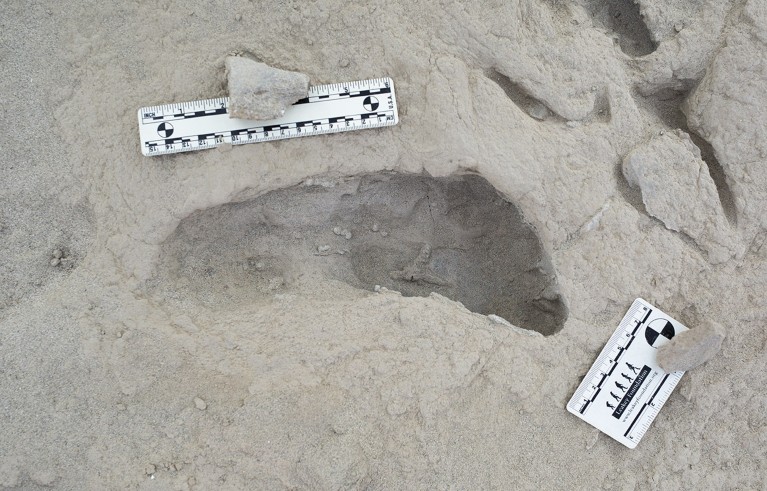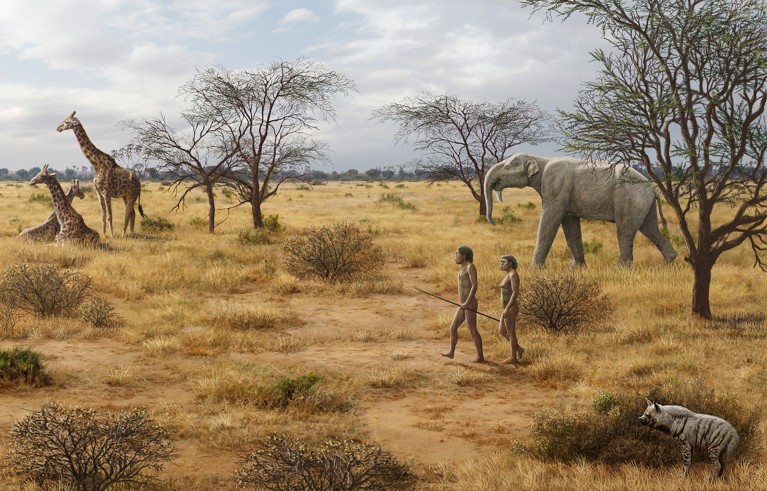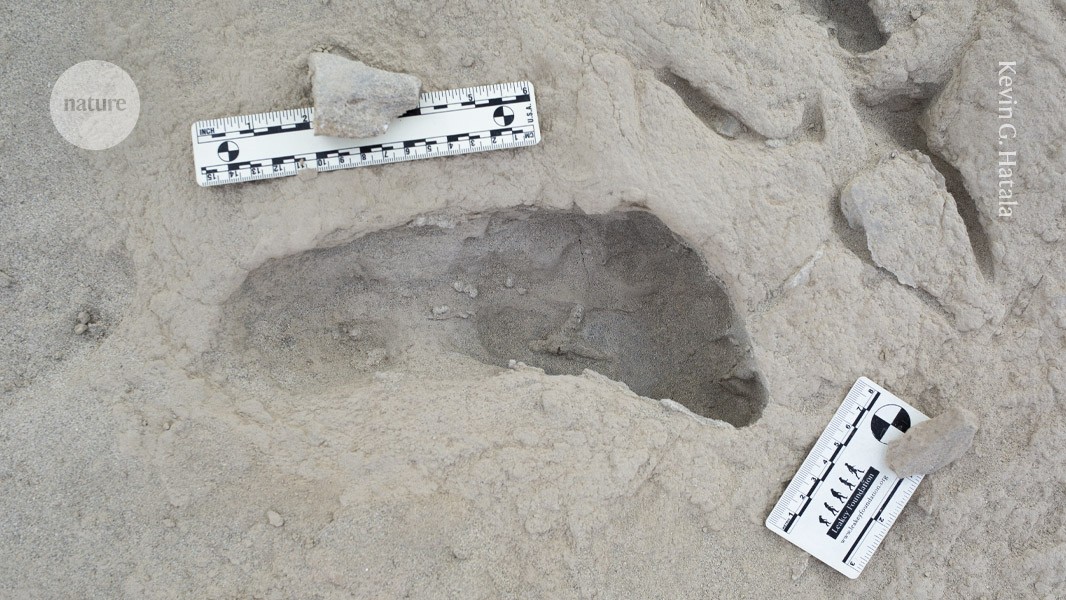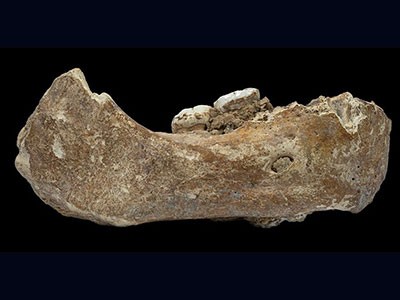
Footprints made by two species of ancient human relative were found in Kenya. This one is thought to have been left by Paranthropus boisei.Credit: Kevin G. Hatala
Some 1.5 million years ago, two ancient species crossed paths on a lake shore in Kenya. Their footprints in the mud were frozen in time and lay undiscovered until 2021.
Biggest Denisovan fossil yet spills ancient human’s secrets
Now, analysis of the impressions reveals that they belonged to Homo erectus, a forebear of modern humans, and the more distant relative Paranthropus boisei. The two individuals walked through the lake area within hours or days of each other — leaving the first direct record of different archaic hominin species coexisting in the same place.
“This is the first snapshot we have of those two species living on the same immediate landscape, potentially interacting with one another,” says study co-author Kevin Hatala, a palaeoanthropologist at Chatham University in Pittsburgh, Pennsylvania. The study was published in Science on 28 November1.
The prints preserved details about the individuals, including the height of their foot arches, the shape of their toes and their walking patterns.
“It really is a snapshot in time,” says Tracy Kivell,a paleoanthropologist at Max Planck Institute for Evolutionary Anthropology in Leipzig, Germany.

Archaic human species (artist’s impression) are thought to have coexisted millions of years ago.Credit: Mauricio Anton/Science Photo Library
“These fossilized footprints are as close as we are going to get to having a time-machine to take us back to an eastern African lakeshore 1.5 million years ago,” says Bernard Wood, a palaeoanthropologist at George Washington University in Washington DC.
Walking path
Previous studies, based mostly on the fossil record, have suggested that different hominin species lived alongside each other. But fossils are often scattered over large areas and their estimated dates span thousands of years. “You don’t know if they’re actually bumping into each other or not,” says Kivell.
In July 2021, researchers discovered multiple sets of ancient footprints at the Koobi Fora site in the East Turkana Area of Kenya, including a continuous path of impressions left by one hominin individual and isolated prints left by at least three others. The surface dates to 1.52 million years ago, and impressions of rippled sand, reed beds and fish nests suggest that the area was a lake shore with shallow water.
Oldest Homo sapiens fossil claim rewrites our species’ history
The path comprises 13 footprints. Hatala and his team estimated that the hominin that created it walked at 1.81 metres per second, similar to a modern human walking briskly.




